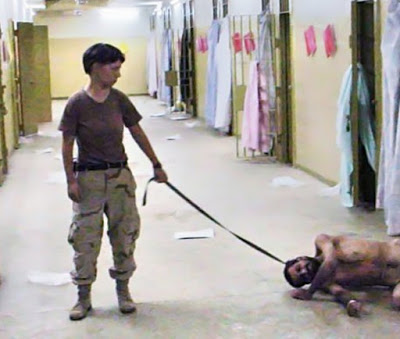Dehumanization means stripping humans off of their human qualities. Dehumanized humans are viewed as less than human by the dehumanizers, no longer having the same worth and dignity that humans normally ascribe to each other.
Researchers have identified two types of dehumanizations- animalistic and mechanistic dehumanization.1
In animalistic dehumanization, you deny human attributes in the other person and view them as an animal. In mechanistic dehumanization, you view the other person as an automatic machine.
For instance, you might say, “Stop acting like a monkey” to your friend jestingly. In this case, you’ve dehumanized your friend and reduced them from a higher level of being human to a lower level of being a monkey.
On the other hand, calling people “robots blindly falling into the traps of consumerism” would be an example of mechanistic dehumanization.
Though dehumanization may often be used jestingly, it also has serious, unfortunate consequences. Throughout history, when one social group oppressed, exploited or exterminated another social group they often resorted to the dehumanization of the latter in order to justify the atrocities.
“If the enemy group is sub-human, they’re not meant to be treated like humans, and killing them is okay”, so the rationale goes. This sort of dehumanization tends to be accompanied by feelings of disgust and contempt for the members of the dehumanized group.
What makes humans so special?
Dehumanization by definition requires putting humans and human-like qualities on a pedestal. Only when you ascribe high value to humanness can you demote non-humanness to a low level. But why do we do this?
It’s all about survival. We’re tribal creatures and in order to exist in cohesive societies, we had to have empathy and consideration for other humans, especially the members of our own group because they were more likely to be our relatives than out-groups.
So, attributing high value to humanity helped us co-exist morally and peacefully within our group. But when it came to raiding and killing other human groups, denying their humanness served as a nice self-absolving justification.2

Role of beliefs and preferences
Beliefs played, and continue to play, a critical role in tying human societies together. Even in modern societies, all political conflicts, internal and external, are more or fewer conflicts of beliefs.
The rationale that plays out here is “If we all believe in X we’re all worthy humans and should treat each other decently. However, those who don’t believe in X are lower than us and should be disqualified as humans and mistreated if required.”
X can take any qualitative value in the above rationale- ranging from a particular ideology to a specific preference. Even seemingly innocuous preference such as ‘favourite music band’ can make people dehumanize and derogate those who don’t share their preference.
“What? You don’t like The Beatles? You can’t be human.”
“I don’t consider people who watch Big Brother as humans.”
“Bankers are shape-shifting lizards who want to control the world.”
Moving from dehumanization to humanization
It follows that if we are to ever reduce human conflict resulting from dehumanization, we need to do the opposite. Simply put, humanization is viewing out-groups as humans. It’s the ever-so-difficult task of reminding ourselves that they’re just like us who happen to be living elsewhere or have beliefs and preferences different from ours.
One way to do this is by interacting with out-groups. Research shows that frequent contact with out-groups induces a desire for humanization and out-group humanization, in turn, leads to a desire for contact with out-group members. Hence, it goes both ways.3
We can predict that those who believe humans are unique and superior to animals will be more likely to engage in dehumanization. Indeed, research confirms that those who believe that animals and humans are relatively similar are less likely to dehumanize immigrants and have more favorable attitudes towards them.4
Anthropomorphism
Human beings are strange. While we have no trouble, against all our rationality, dehumanizing someone who looks, talks, walks, and breathes like a human, we sometimes ascribe human-like qualities to non-human objects. This weird but common phenomenon is known as anthropomorphism.
Examples include people who talk about their cars as one would about their spouse (“She needs a service”, they’ll say), who talk to their plants and who dress up their pets. An ardent photographer I know once admitted that his DSLR camera was his girlfriend and I myself referred to this blog as “my baby” once while I was bragging about its success.
Watching out for what objects people anthropomorphize in their lives can be a good way to understand what they value the most.
References
- Haslam, N. (2006). Dehumanization: An integrative review. Personality and social psychology review, 10(3), 252-264.
- Bandura, A., Underwood, B., & Fromson, M. E. (1975). Disinhibition of aggression through diffusion of responsibility and dehumanization of victims. Journal of research in personality, 9(4), 253-269.
- Capozza, D., Di Bernardo, G. A., & Falvo, R. (2017). Intergroup Contact and Outgroup Humanization: Is the Causal Relationship Uni-or Bidirectional?. PloS one, 12(1), e0170554.
- Costello, K., & Hodson, G. (2010). Exploring the roots of dehumanization: The role of animal-human similarity in promoting immigrant humanization. Group Processes & Intergroup Relations, 13(1), 3-22.
